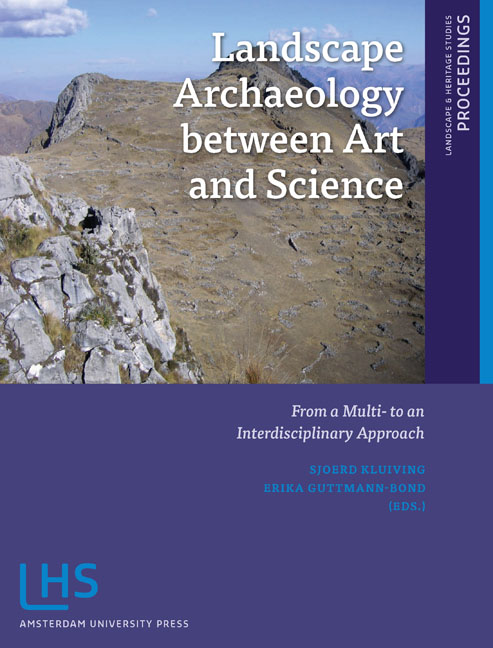Book contents
- Frontmatter
- Contents
- Preface
- Introduction: LAC2010: First International Landscape Archaeology Conference
- THEME 1 HOW DID LANDSCAPE CHANGE?
- THEME II IMPROVING TEMPORAL, CHRONOLOGICAL AND TRANSFORMATIONAL FRAMEWORKS
- THEME III LINKING LANDSCAPES OF LOWLANDS TO MOUNTAINOUS AREAS
- THEME IV APPLYING CONCEPTS OF SCALE
- THEME V NEW DIRECTIONS IN DIGITAL PROSPECTION AND MODELLING TECHNIQUES
- THEME VI HOW WILL LANDSCAPE ARCHAEOLOGY DEVELOP IN THE FUTURE?
- Miscellaneous Endmatter
1.7 - Talking ruins: The Legacy of Baroque Garden Design in Manor Parks of Estonia
Published online by Cambridge University Press: 21 January 2021
- Frontmatter
- Contents
- Preface
- Introduction: LAC2010: First International Landscape Archaeology Conference
- THEME 1 HOW DID LANDSCAPE CHANGE?
- THEME II IMPROVING TEMPORAL, CHRONOLOGICAL AND TRANSFORMATIONAL FRAMEWORKS
- THEME III LINKING LANDSCAPES OF LOWLANDS TO MOUNTAINOUS AREAS
- THEME IV APPLYING CONCEPTS OF SCALE
- THEME V NEW DIRECTIONS IN DIGITAL PROSPECTION AND MODELLING TECHNIQUES
- THEME VI HOW WILL LANDSCAPE ARCHAEOLOGY DEVELOP IN THE FUTURE?
- Miscellaneous Endmatter
Summary
ABSTRACT
The late 19th-century and early 20th-century ‘grand era’ of manor parks in Estonia coincides with a period when English gardening ideas dominated Europe. What is less recognised, however, is that manors in Estonia possess formal French-inspired gardens dating from the mid-18th century (the introduction of Baroque design in Estonia was delayed). Today, about 600 complete manor ensembles remain, retaining distinctive structural characteristics which date from the 18th-19th centuries. It is quite typical that in old parks of Estonia Baroque and English garden styles have merged, giving them a unique and original character. This research reports on archival study, field investigation and map analyses of 45 protected manor parks in Estonia. The analysis suggests that, despite the relatively short period (ca. 1730-1770), formal Baroque gardening was the dominant style practised in Estonia. The movement had a significant influence on local garden design, and on landscape planning more broadly. The Baroque elements in manor lands include formal geometric spaces, axial connections between landscape and buildings, orchestrated vistas and tree-lined roadways. Within the Baroque garden, formal plantings, pathways and water features were arranged in classical configurations. Finding physical traces of Baroque artefacts today is difficult because many manor parks were destructed during the Soviet era in the latter half of the 20th century. Nevertheless, archival materials and present-day visits to garden ruins in manor parks suggest that formal Baroque gardens dating from mid 18th-century manor lands were vivid and sophisticated ensembles of formal terrain, tree allées, sculptural elements and finely orchestrated water elements.
KEYWORDS
landscape design, park planning, manor parks, Baroque garden design, Estonia
INTRODUCTION
The Baroque garden design movement has given to mankind some of the most splendid and grandiose examples of spatial arrangement in the built and natural environment. For example, the legendary park at Versailles near Paris ranks amongst the world's greatest achievements in garden design. However, after the rise of ideals of equality one of the key ideologies of the French monarchy – formal Baroque design – fell out of favour during the 18th century. As the popularity of Baroque design waned in Western Europe, however, formal garden design continued to be practised in Estonian manor parks during 19th century by local German-influenced gentry.
- Type
- Chapter
- Information
- Landscape Archaeology between Art and ScienceFrom a Multi- to an Interdisciplinary Approach, pp. 115 - 126Publisher: Amsterdam University PressPrint publication year: 2012
- 1
- Cited by



